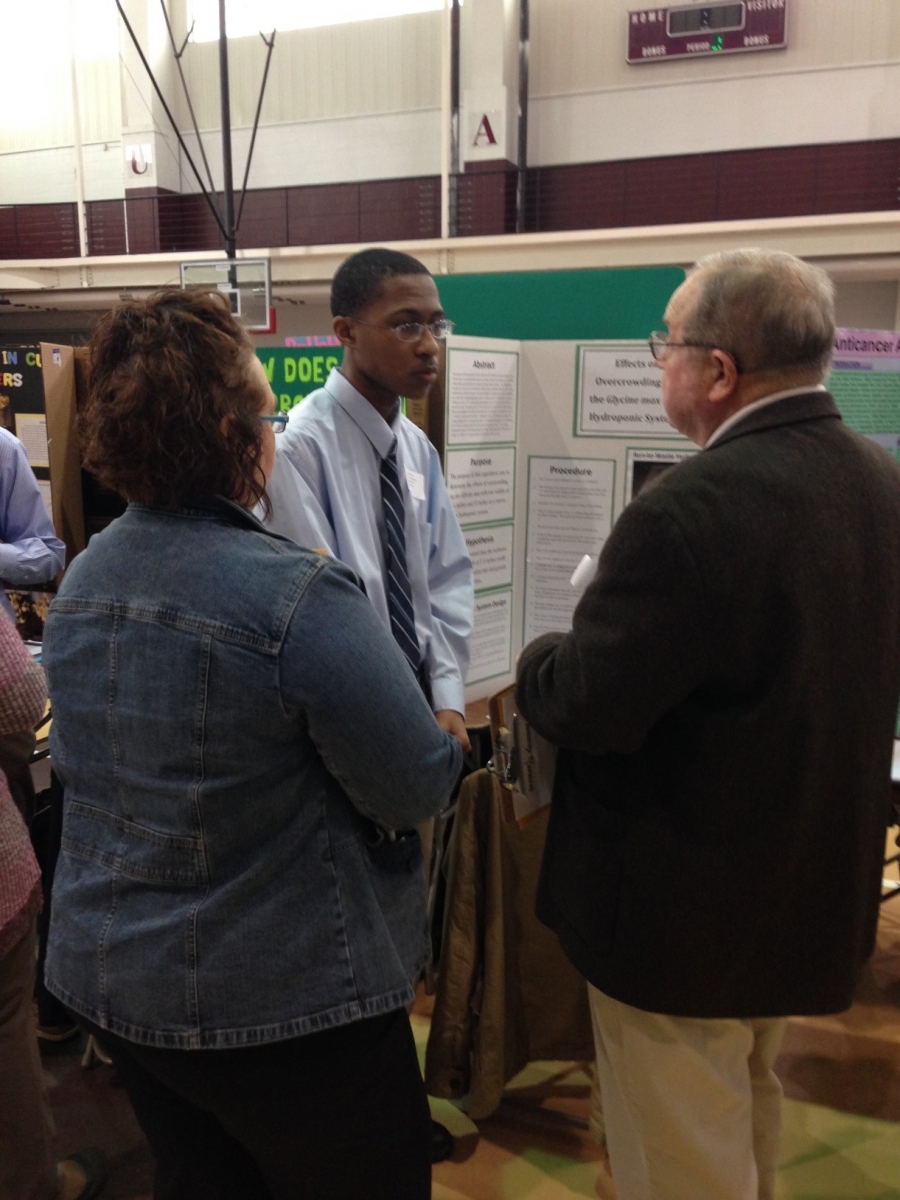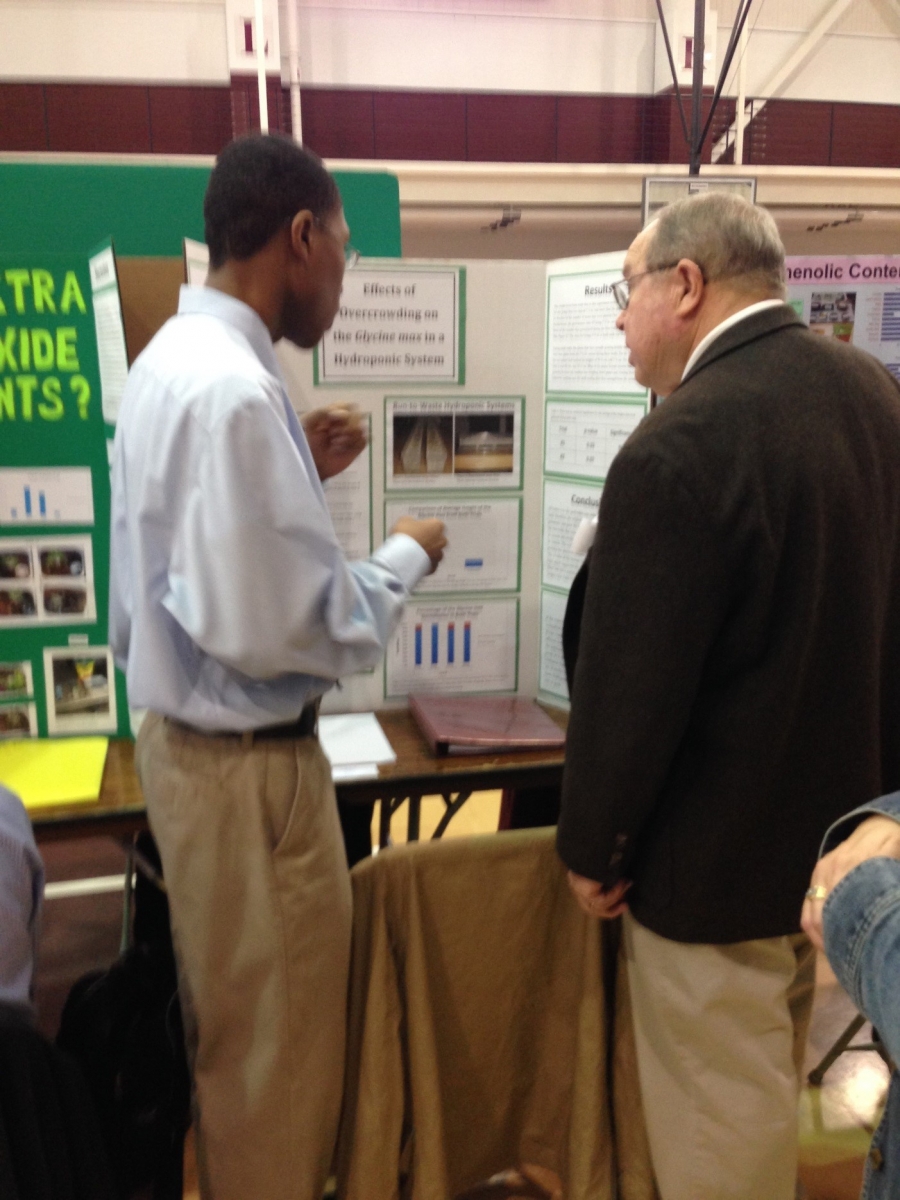Cameron Thomas

Cameron Thomas wins Arkansas Soybean Science Challenge Award at
Central Arkansas Regional Science & Engineering Fair
Cameron Thomas, 16, an 11th grader at Central High School in Little Rock won the regional round of the Soybean Science Challenge at the 2015 Central Arkansas Regional Science and Engineering Fair held at the University of Arkansas at Little Rock on March 10. Cameron also won an Honorable Mention in Plant Sciences.
Cameron received a $300 cash award provided by the Arkansas Soybean Promotion Board. His science project was on the effects of overcrowding on the Glycine max (soybean) in a hydroponic system.
“I felt excited that a project that I spent most of my time working on was acknowledged at a regional fair,” Cameron said.
When Cameron was taking the Soybean Science Challenge online course, he “found the section about soybean biodiesel interesting since it can be an efficient way to travel without causing pollution to the environment.”
Watching the videos on how farmers try to find ways to maximize their yield production was also enlightening to him.
Before taking the Soybean Science Challenge online course, Cameron knew that soybeans were used as a source of protein in meat and dairy and that it could be used as food for fish in Arkansas. Through the online course, he gained more knowledge about the different uses for soybeans and how soybeans are accessible for people around the world.

Cameron Thomas with Soybean Science Challenge judges Dr. Lanny Ashlock and
Melanie Fuhrman at the Central Arkansas Regional Science & Engineering Fair.
Arik Thomas, Cameron’s dad, said, “I am very proud about Cameron winning the award. I observed the amount of effort it took for him to take an idea and turn it into a quality project.
According to his father, Cameron was interested in research as early as the third grade when he came up with a project to see how different types of polluted water affected the growth of the great northern bean. Cameron’s excitement in his daily observations showed his dad how interested Cameron was in research.
“Cameron is a hardworking young man who has always strived academically,” said his dad. “As an avid reader and chess player, Cameron is very caring and believes in fairness for others as evidenced through his volunteer efforts not only in Arkansas, but also in different places nationally.”
Based on the science project he did this year, Cameron plans to create other projects either using a different hydroponic system or plant the soybeans outdoors in order to test his original hypothesis about different row widths.
“The Arkansas Soybean Science Challenge Award program is in its second year and is a partnership between the University of Arkansas Division of Agriculture, Cooperative Extension Service and the Arkansas Soybean Promotion Board,” said Dr. Karen Ballard, Extension developer and director of the program.
“The goal of the Arkansas Soybean Science Challenge is to engage students in “real world” education to sup

port soybean production and agricultural sustainability,” said Shannon Davis, past president of the Arkansas Soybean Promotion Board. “The program also rewards scientific inquiry and discovery that supports the Arkansas soybean industry.”
Information on the 2015-16 Arkansas Soybean Science Challenge will be available in summer 2015. For more information, contact Dr. Karen Ballard or Dr. Lynda Wilson at 501.671.2086 or kballard@uaex.edu.
The Cooperative Extension Service is part of the University of Arkansas System Division of Agriculture.
Cameron Thomas discusses his project with
Soybean Science Challenge judge Dr. Lanny Ashlock.
Cameron Thomas – Second Soybean Science Challenge Regional Winner –
Central Arkansas Regional Science and Engineering Fair
Project Title: Effects of Overcrowding on the Glycine max in a Hydroponic System
Category: Plant Sciences
Abstract:
Traditional farmers mainly use a row spacing ranging from 15 to 30 inches in order to grow soybeans, which may have a lower production rate when compared to using a narrow row spacing. This experiment was conducted to determine if the Glycine max (soybean) could grow at an effective germination rate and height with a row spacing of either 7.5 inches or 15 inches. The experiment was done in a run-to-waste hydroponic system using a perlite and vermiculite medium mix.
